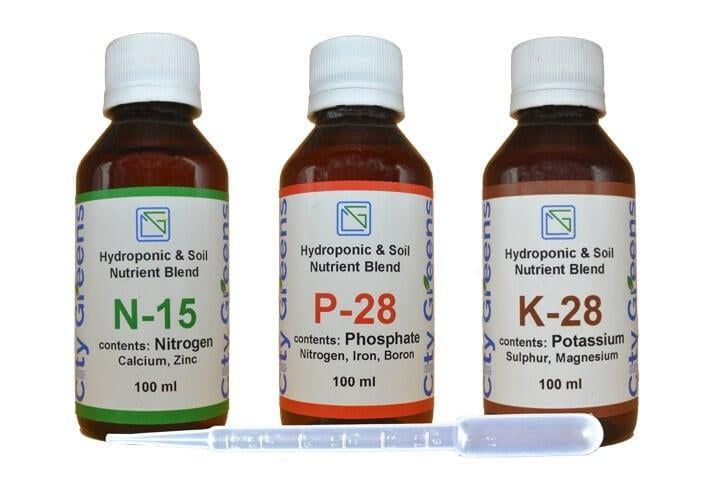Assume you walk into a gardening store looking for the right kind of balanced nutrient mix for your plants. You come across a couple of balanced solutions. The label on the first one reads NPK 05-05-05 while on the other one it says NPK 10-10-10. You are wondering which one to go for. Answering the following questions may help you pick the right one.
- Which one is better, NPK 05-05-05 or NPK 10-10-10?
- Which one of these is balanced?
To answer these questions, it is imperative first to understand what do the numbers after NPK denote.
Decoding NPK formula
Most of the literature and references available in the public domain will tell you that the numbers in front of NPK denote the amount of Nitrogen, Phosphorus, and Potassium contained in the nutrient mix. Thus, NPK 10-10-10 will mean that the Nutrient mix consists of 10% Nitrogen, 10% Phosphorus, 10% Potassium, and the remaining 70% being filler or inert matter.
This widely propagated and accepted explanation is, in fact, incorrect.
This is because the terms NPK do not denote the amount of Nitrogen, Phosphorus, and Potassium but the amount of Nitrogen, Phosphorus pentoxide (P2O5), and Potassium oxide (K2O) in the mix. Thus, NPK 10-10-10 consists of 10% Nitrogen, 10% Phosphorus pentoxide, and 10% Potassium oxide, remaining 70% being filler or inert matter.
How to use the NPK ratios to determine the actual N, P, and K content in your nutrient mix?
For the sake of understanding, we will consider NPK 10-10-10. As explained above, NPK 10-10-10 consists of :
- Nitrogen - 10%
- P2O5 - 10%
- K2O - 10%
Calculating Phosphorus content
each molecule of P2O5 consists of two atoms of P and five atoms of O. In elementary chemistry classes, we learned that the atomic weight of P is 31 and of O is 16. Thus a molecule of P2O5 will weigh 142 (=31x2 + 16x5) of which 62 is contributed by P (=31x2). Thus the amount of P in P2O5 is 43.6% (=62/142).
Calculating Potassium content
Similar calculations for K2O will show that the amount of K (atomic weight 30) in K2O is 83%.
So, in terms of macronutrients, NPK 10-10-10 consists of
- Nitrogen - 10%
- Phosphorus - 4.36%
- Potassium - 8.3%
Having understood this, we can now answer the queries that were posed above
- Which one is better NPK 05-05-05 or NPK 10-10-10?
- None. They both are same. It's just that the former has half the strength of the latter.
- Are both balanced?
- Depends, if you are looking for a balance in N, P2O5, and K2O, then they both are balanced. However, if you are looking for a balance in N, P, and K, then, none of them are balanced.
How is CityGreens NPK different?
CityGreens NPK differs on a couple of counts
- Along, with NPK, it has many other vital micronutrients
- When used as instructed, it results in a ratio that provides an almost equal amount of N, P, and K to the plants (instead of an equal amount of N, P2O5, and K2O)
Having said that, just to reinforce, as we had pointed out in our last week's post, there is no perfect nutrient formula that can work wonders with all the plants and in all the situations. What your plant needs may be entirely different from what your neighbours' may need. You will need to experiment to arrive at the best solution for your specific case. We hope you do that.
Happy Growing!
